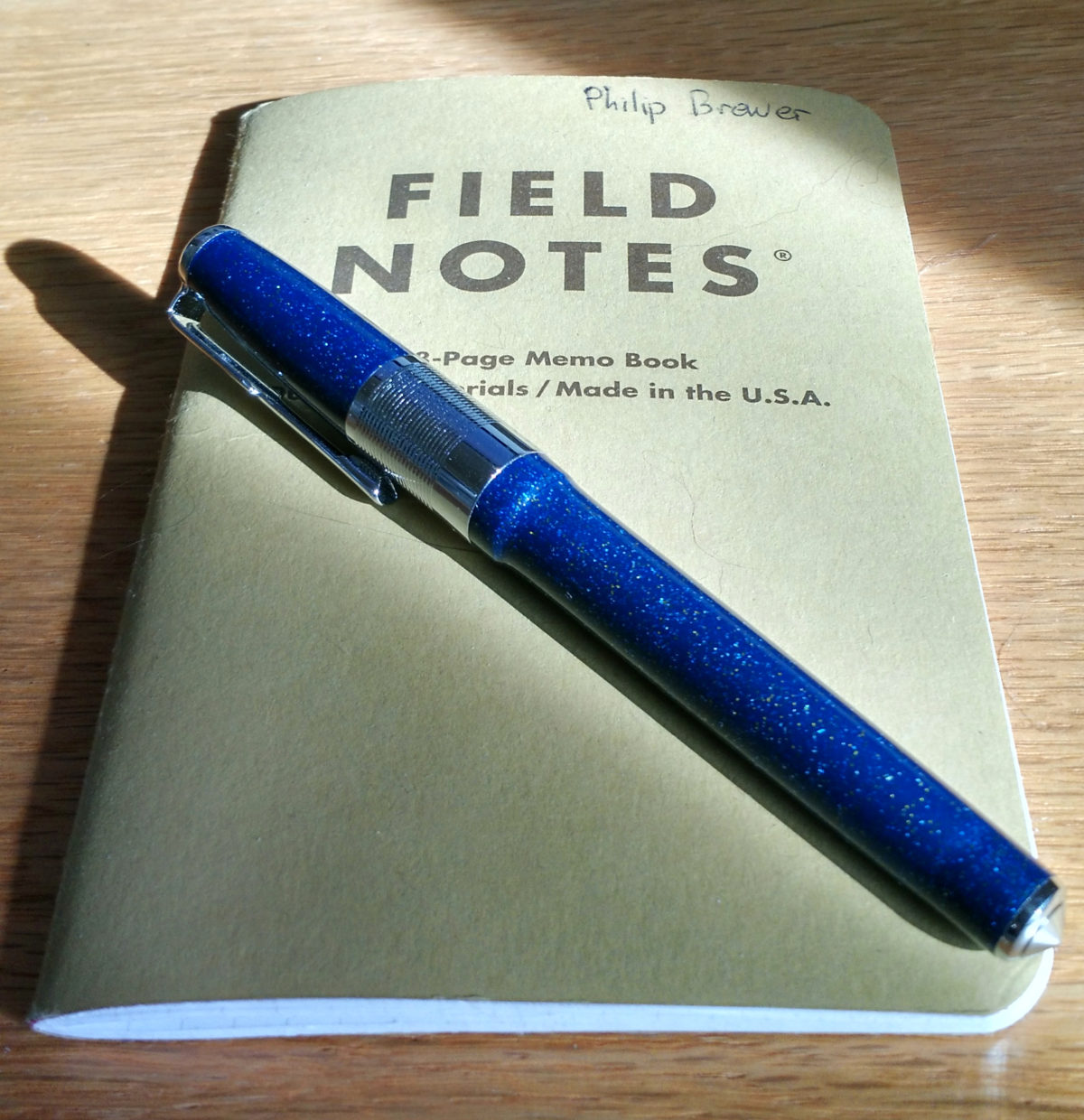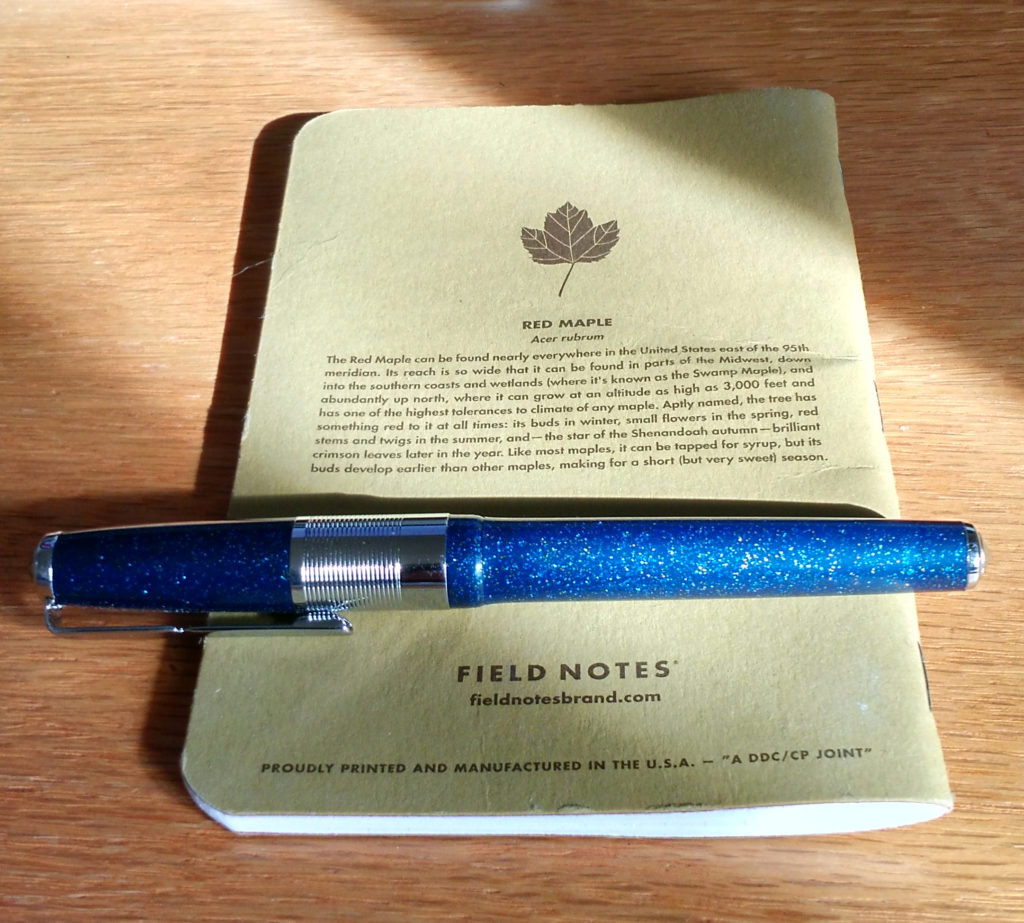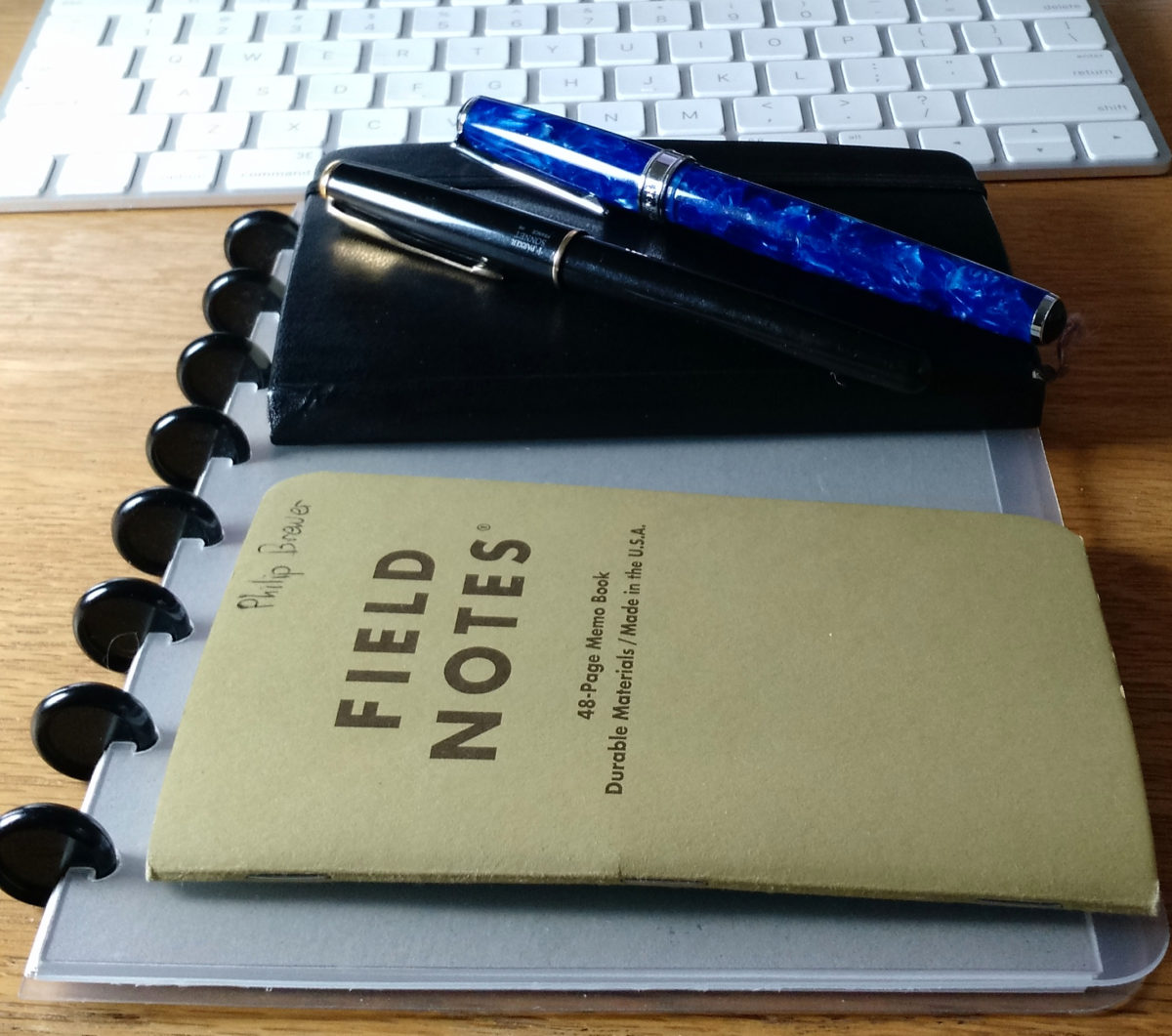Several things came together to get me started with paper journals again.
My brother suggested that we might write one another actual paper letters. I think that was partially just because it’s fun to receive actual paper letters, but also because we’d been talking about reviving an idea we worked on a while back, for collaborating on an epistolary story in Esperanto, which would involve the characters writing actual paper letters, which put us in the frame of mind of thinking about letters.
At about the same time, Tobias Buckell wrote a post about starting a bullet journal, with links to a couple of videos (one a nice review of a particular notebook designed with bullet journaling in mind, the other a video on starting a bullet journal).
As an aside, let me mention that the main bullet journal site has the “reference guide” for bullet journaling translated into many languages, including Esperanto! (They want you to give them your email address and sign up for their newsletter to get the link to the reference guides.)
I’m perpetually vulnerable to diving too deep down this particular rabbit hole, geeking out over anything and everything related: notebooks, paper, pens, etc. Already I have:
- Gotten out and inked a couple of fountain pens that I haven’t used since I was working at a regular job (and had enough opportunities to take notes that I could work my way through a piston converter full of ink before it dried out).
- Rearranged sheets in several of my Levenger Circa notebooks to clear one for daily use as a bullet journal, and used it as such for almost a week now.
- Drafted a handy Field Notes notebook for separately tracking my bodyweight workouts (which seem to call for their own non-bullet journal).
- Downloaded two separate PDF workbooks on Spencerian handwriting, and spent perhaps an hour practicing (my long-ago forgotten) cursive writing.
- Written two letters to my brother and one to my mom.
I’m having great fun. It’s probably a big waste of time, but I’m finding it a at least a little bit useful:
- I’ve probably remembered to do a couple of things I’d have forgotten, because I had noted the task in my journal.
- I’ve probably done a couple of things that I’d otherwise have procrastinated on, because I had noted the task in my journal (and didn’t want to either strike it out nor carry it forward another day).
- I’ve definitely got a much better idea what I’ve actually gotten done, because I have a record in my journal.
- I’ve gotten to play with my fountain pens, the new Mont Blanc pen the Wise Bread founders gave me, my Dr. Grip G2 gel pens, and my Fisher space pens (all excellent pens—each the right tool for one circumstance or another).
I think Steven and I will continue writing one another, at least for a while; it’s fun! I’m continuing my bullet journal—I’m currently on day six. My handwriting has definitely improved.
Basically, it’s all good. Even if there are obvious advantages to just keeping stuff in a computer, it’s not as much fun, and why do stuff if it isn’t fun?







